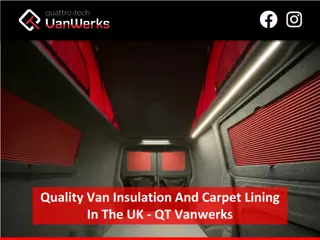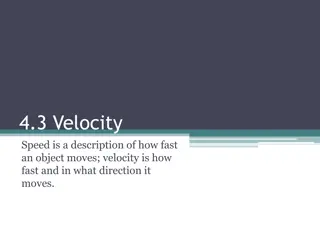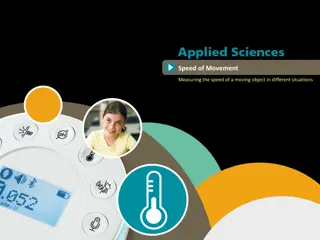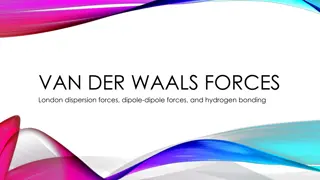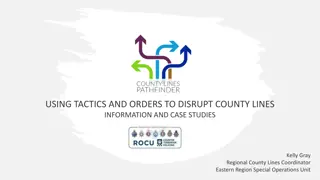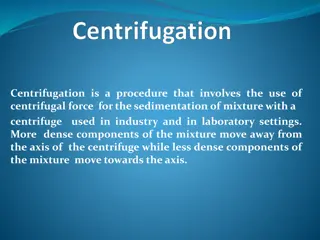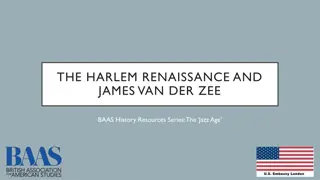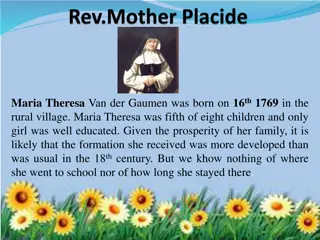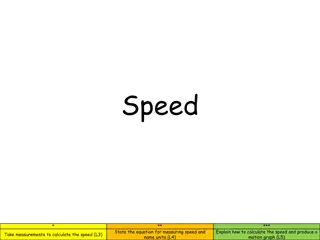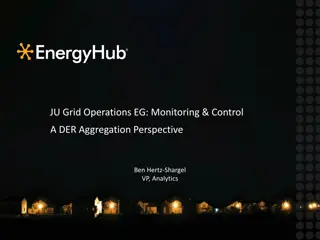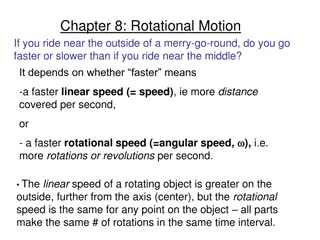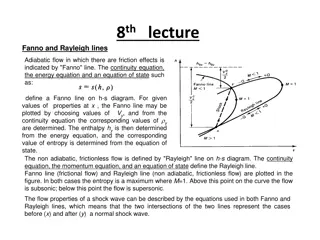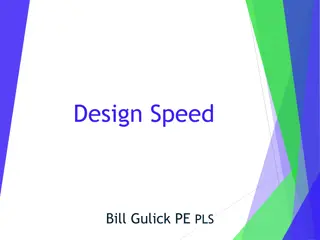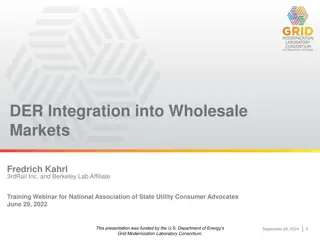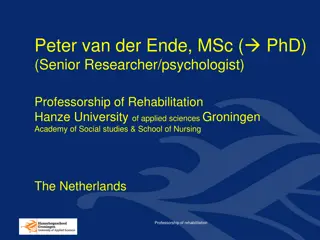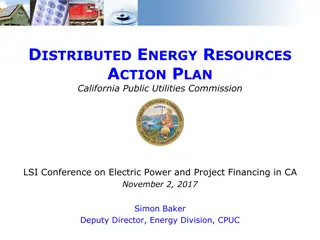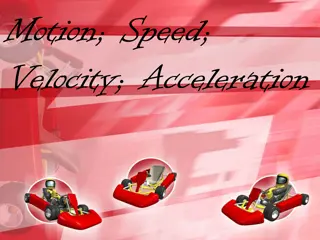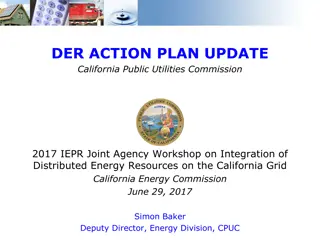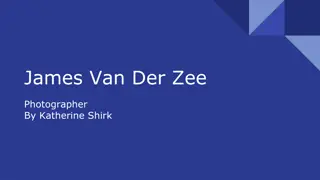Enhancing Speed Control with COSBI Lines: A Study by Jaco van der Spuy
Explore the effectiveness of controlling speed through illusion lines known as COSBI Lines, as investigated by Jaco van der Spuy in a recent study. The presentation delves into the purpose, introduction, literature study, case study, results, and questions surrounding this innovative method. Discover the equipment used and the potential implications of this research in various contexts.
Download Presentation

Please find below an Image/Link to download the presentation.
The content on the website is provided AS IS for your information and personal use only. It may not be sold, licensed, or shared on other websites without obtaining consent from the author.If you encounter any issues during the download, it is possible that the publisher has removed the file from their server.
You are allowed to download the files provided on this website for personal or commercial use, subject to the condition that they are used lawfully. All files are the property of their respective owners.
The content on the website is provided AS IS for your information and personal use only. It may not be sold, licensed, or shared on other websites without obtaining consent from the author.
E N D
Presentation Transcript
THE EFFECTIVENESS OF CONTROL OF SPEED BY ILLUSION LINES COSBI Lines Jaco van der Spuy 10 July 2019
PURPOSE OF PRESENTATION INTRODUCTION LITERATURE STUDY CASE STUDY RESULTS QUESTIONS 2 10 July 2019
Introduction: What is COSBI Lines? Equipment used 3 10 July 2019
What do Literature say: Implementation is cost effective and easily installed 10 15% reduction in speed Multiple sets used in a sequence namely primary and secondary sets of bars Primary set same spacing, secondary set spacing decreasing 4 10 July 2019
What do Literature say: (conti) Formula for calculating the spacing: 2 1 2? ? ? ? ? ??= + ?0 + ?0 xt = displacement from end treatment (m) to each individual bar (t) a = acceleration (m/s2) n = number of bars f = bar frequency v0 = initial speed entering the treatment (m/s) x0 = distance from the beginning of the treatment area (m) 5 10 July 2019
Case Study: National Route 2 Section 1 6 10 July 2019
Case Study: Location of Case study 7 10 July 2019
Case Study: LHS Culvert Median Site Camp 8 10 July 2019
Case Study: Before study LHS Culvert Total of 338 vehicle s speeds recorded over 1 hour Vehicles 50 and 80m from the measuring points 9 10 July 2019
Case Study: Before study Median Total of 529 vehicle s speeds recorded over 1 and half hours Vehicles 50 and 80m from the measuring points 10 10 July 2019
Case Study: Before study Site Camp Total of 528 vehicle s speeds recorded over 2 hours 11 10 July 2019
Case Study: Before study Average Speed (km/h) Type of Vehicle LHS Culvert Median Site Camp Cars 89.98 87.47 83.76 SUV 89.45 88.67 82.97 (Sport Utility Vehicle) LDV 89.22 88.44 84.35 (Light Duty Vehicle) Trucks 79.91 77.77 74.75 Other 87,00 88.36 83.14 Overall average speed 87.11 85.59 81.46 12 10 July 2019
Case Study: Spacing calculation Calculated to reduce the speed by approximately 50% from 120 km/h to 60 km/h Frequency of bars can be 2 or 4 per second 4 bars are more effective than 2 bars Two formulas used to calculate spacing and compared to each other 13 10 July 2019
Case Study: Spacing calculation Formula 1: 2 1 2? ? ? ? ? ??= + ?0 + ?0 xt = displacement from end treatment (m) to each individual bar (t) a = acceleration (m/s2) n = number of bars f = bar frequency v0 = initial speed entering the treatment (m/s) x0 = distance from the beginning of the treatment area (m) 14 10 July 2019
Case Study: Spacing calculation Formula 2: ? =?2 ?2 2? s = displacement (m) (treatment length if using design initial and final values) v = final velocity (m/s) u = initial velocity (m/s) a = acceleration (m/s ) 15 10 July 2019
Case Study: Spacing calculation Formula 2: ? =33.332 16.672 2 5 s = 81.3m v = 120km/h = 33.33m/s u = 60km/h = 16.67m/s a = 5m/s 16 10 July 2019
Case Study: Spacing calculation 17 10 July 2019
Case Study: Painting of lines COSBI lines were painted on 12 December 2018 Retro-reflective road marking paint was used 14 bars applied as secondary set 3 bars applied as primary set using same spacing as the first bar 10 July 2019 18
Case Study: After study Measurements taken at the same positions Measurements taken on 13 December 2018 (928 vehicles were observed) and 10 January 2019 (1374 vehicles were observed) 19 10 July 2019
Case Study: After study Average Speed (km/h) Type of Vehicle LHS Culvert Median Site Camp 13/12/2018 10/1/2019 13/12/2018 10/1/2019 13/12/2018 10/1/2019 Cars 75.12 73.22 74.92 73.34 72.04 SUV 76.89 74.40 75.46 75.47 73.14 DID NOT DO MEASURMENTS DUE TO THE TRAFFIC BACKED UP OVER COSBI LINES LDV 73.19 74.16 75.18 74.14 72.74 Trucks 64.57 65.31 65.73 67.22 65.93 Other 75.84 72.74 76.52 79.63 71.93 Overall average speed 72.44 71.97 72.82 72.54 70.96 20 10 July 2019
Case Study: Speed Comparison Before and After Speed Study 100 95 90 89 89 89 88 87 90 84 84 83 85 80 78 76 80 75 75 75 74 74 74 73 73 72 75 66 66 70 65 65 60 Speed (km/h) 55 50 45 40 35 30 25 20 15 10 5 0 Cars SUV LDV Trucks LHS Culver (Before) Median (Before) Site Camp (Before) LHS Culvert (After) Median (After) Site Camp (After) 21 10 July 2019
Case Study: Speed Comparison Graph shows a clear reduction in average speed. Average speed before the marking were applied was between 81,5 km/h and 87,2 km/h Average speed after the markings were applied decreased to between 71,9 km/h and 70,9 km/h This shows a decrease in average speed of 15% 22 10 July 2019
Case Study: Speed Comparison Design was supposed to reduce the speed by 50%, while the actual effect was measured to be 15%. COSBI lines seems as a effective warning markings due to its visibility over a long distance 23 10 July 2019
Conclusions: COSBI lines can reduce average speed between 10 to 15 % COSBI lines are effective on a road section in speed reduction Need to extent the time period Design procedures developed in the USA cannot be transferred to local conditions. Further research needs to be done under local 10 July 2019 conditions. 24
Recommendations: Thermo-plastic or Cold melt plastic type road marking paint be used In rural areas is could be used in conjunction with rumble strips. Further research needs to be done under local conditions. Additional speed tests should be perform up to two years after road markings application. 25 10 July 2019
Acknowledgements: Marcel Schr der - Royal HaskoningDHV (Pty) Ltd N2 Construction team - Royal HaskoningDHV (Pty) Ltd Mr. Renaldo Lorio of the South African National Roads Agency SOC Limited (SANRAL) 26 10 July 2019
SATC 2019 THE EFFECTIVENESS OF CONTROL OF SPEED BY ILLUSION LINES Thank you / Questions? Jaco vd Spuy Marcel Schr der jaco.vanderspuy@rhdhv.com Royal HaskoningDHV (Pty) Ltd Royal HaskoningDHV (Pty) Ltd 09 July 2019 27 10 July 2019




